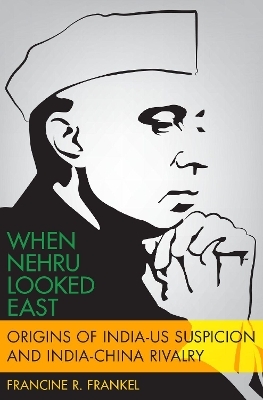
When Nehru Looked East
Oxford University Press Inc (Verlag)
978-0-19-006434-1 (ISBN)
Analyzing India-US and India-China relations during this period, Frankel explains how these parties came to distrust each other. From the outset, Nehru's vision of India's destiny as a great power collided with that of the US as leader and protector of the free world. He considered the US a rival in South and Southeast Asia and the Middle East and carried out an active diplomacy to dissuade newly independent nations from joining US-led anti-communist mutual security alliances and instead follow India's example of non-alignment. He did not see a threat from the Soviet Union and believed, despite the dispute with China over the northern border, that India's approach would bring India and China together as advocates of Asianism to counter American penetration in the region. This historic miscalculation, manifested in the 1962 China-India War, overthrew the pillars of Nehru's foreign policy.
Frankel provides the most authoritative account yet of the origins of India-US suspicions and India-China rivalries. Outlasting the Cold War, Nehru's worldview lived on in the mindset of successor generations, making it difficult for the US and India to form a strategic partnership and establish a natural balance in Asia.
Francine R. Frankel is Professor Emeritus of Political Science and Founding Director of the Center for the Advanced Study of India (CASI) at the University of Pennsylvania. She is a Founding Member of the University of Pennsylvania Institute for the Advanced Study of India (UPIASI), New Delhi, the counterpart institution of CASI. She is the author, or co-editor of eight books, including India's Political Economy, 1947-1977, and India's Political Economy, 1947-2004, second edition.
Preface
Acknowledgments
Abbreviations
Chapter 1: First Encounters
Chapter 2: Partition: Anglo-U.S. Origins of Strategic Parity between India and Pakistan
Chapter 3: Kashmir: Onset of India's Suspicion of the United States
Chapter 4: Different Worlds: U.S. and Indian Policies toward Nationalist Movements in Asia, Communist Victory in China, and the Chinese Claim to Tibet
Chapter 5: Korea: India's "Un-Neutral" China Policy Stokes U.S. Suspicions
Chapter 6: U.S. and Indian Policies in Direct Conflict, Part I: Collective Security in the Middle East and Pakistan
Chapter 7: U.S. and Indian Policies in Direct Conflict, Part II: India's "Area of Peace" as a Strategy to Contain U.S. Intervention in Indi-China and Southeast Asia
Chapter 8: India-China War, 1962
Epilogue
Bibliography
| Erscheinungsdatum | 07.01.2020 |
|---|---|
| Reihe/Serie | Modern South Asia |
| Verlagsort | New York |
| Sprache | englisch |
| Maße | 236 x 160 mm |
| Gewicht | 676 g |
| Themenwelt | Geisteswissenschaften ► Geschichte ► Regional- / Ländergeschichte |
| Sozialwissenschaften ► Politik / Verwaltung ► Europäische / Internationale Politik | |
| Sozialwissenschaften ► Politik / Verwaltung ► Vergleichende Politikwissenschaften | |
| ISBN-10 | 0-19-006434-X / 019006434X |
| ISBN-13 | 978-0-19-006434-1 / 9780190064341 |
| Zustand | Neuware |
| Haben Sie eine Frage zum Produkt? |
aus dem Bereich


